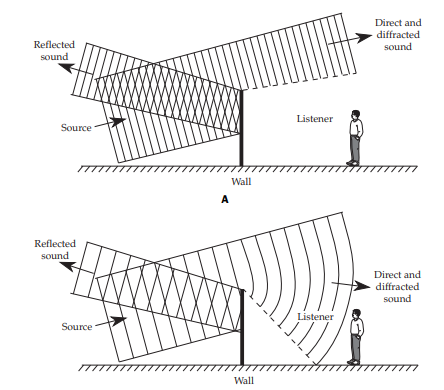I came across this very useful diagram that helps show graphically how diffraction is less pronounced for higher frequencies and how lower frequencies easily diffract over the top edge of a noise barrier. The sound striking a solid traffic barrier will be partly reflected, and partly diffracted.
(A) High-frequency traffic sounds are successfully attenuated on the other side of the barrier because of limited diffraction.
(B) Low-frequency traffic sounds are less attenuated because of more prominent diffraction. Sound passing the top edge of the barrier acts as though the wavefronts are lines of sources, radiating sound energy into the shadow zone.

It is important to understand the benefits and limitations of noise barriers.
